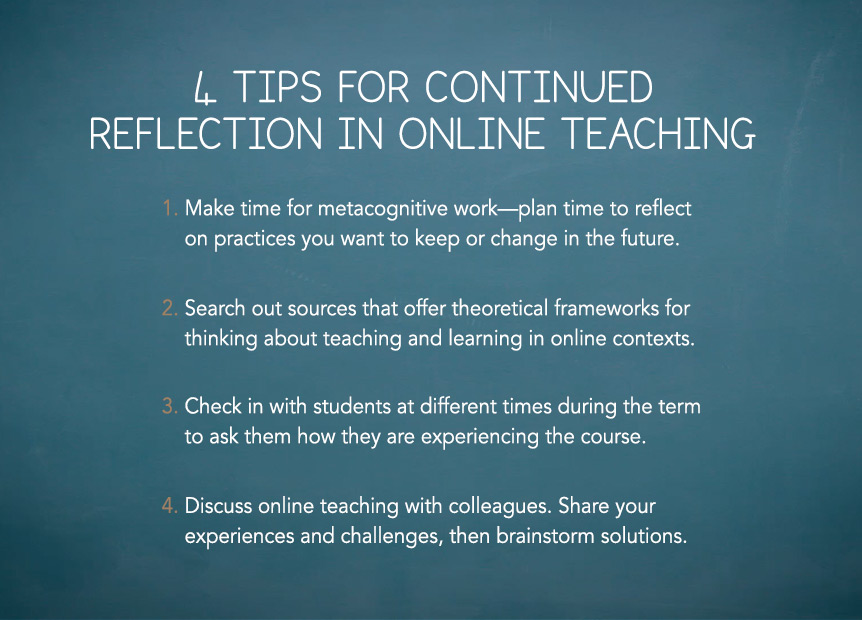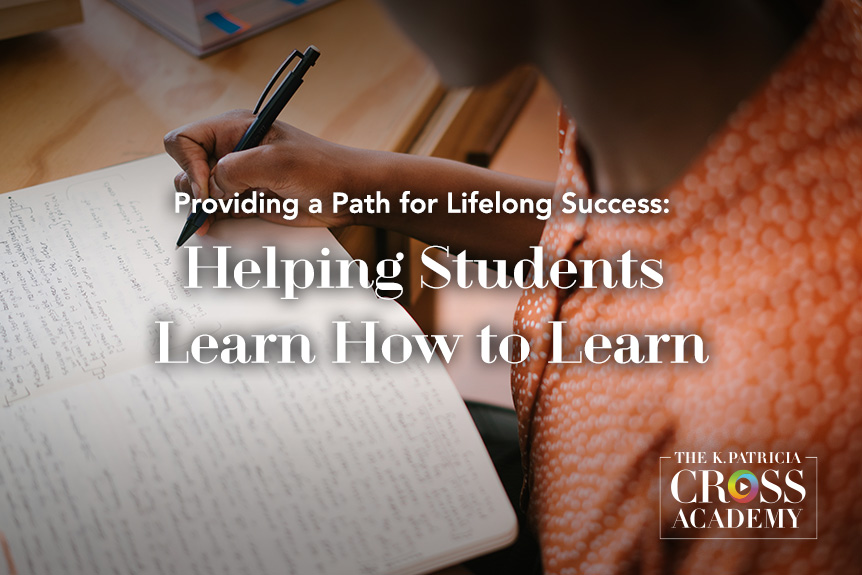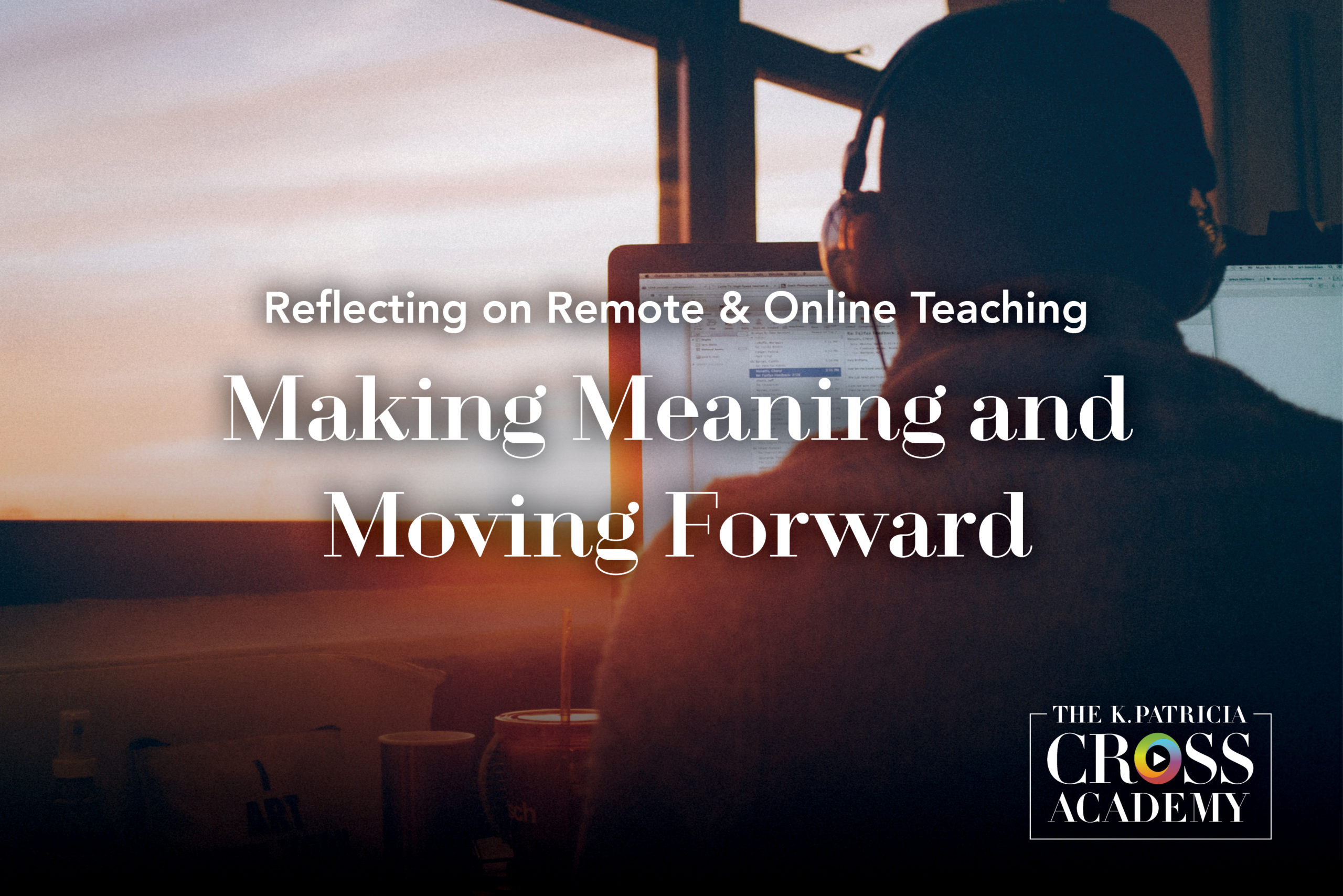
For years we have acknowledged that college teaching has gotten tougher, but the abrupt shift to remote teaching in response to the COVID-19 pandemic presented instructors with even more challenges. As colleges and universities struggled to deal with the crisis in the spring of 2020, some professors had only a week’s or even a weekends’ notice to restructure their classes to a fully online environment. Teachers rose to the challenge, however, and while not everything went perfectly, it is a testament to faculty (and student) resilience that the show went on.
Many instructors have continued to teach in an online environment. Some have stayed because they found that they enjoyed teaching in this environment. Others remained because student demand for online courses has increased. And some have persisted for other professional or personal reasons.
These ongoing efforts to teach online are different from the remote teaching experience. Remote teaching occurs when an instructor rapidly transitions an ongoing, on-campus course to an online environment, often in response to an external event such as a pandemic or natural disaster. An online course, however, has been purposely designed for online teaching from the outset. Thus, many professors have moved from emergency-induced remote teaching to the relatively more relaxed routine of refining the online courses they had been forced so suddenly to create.
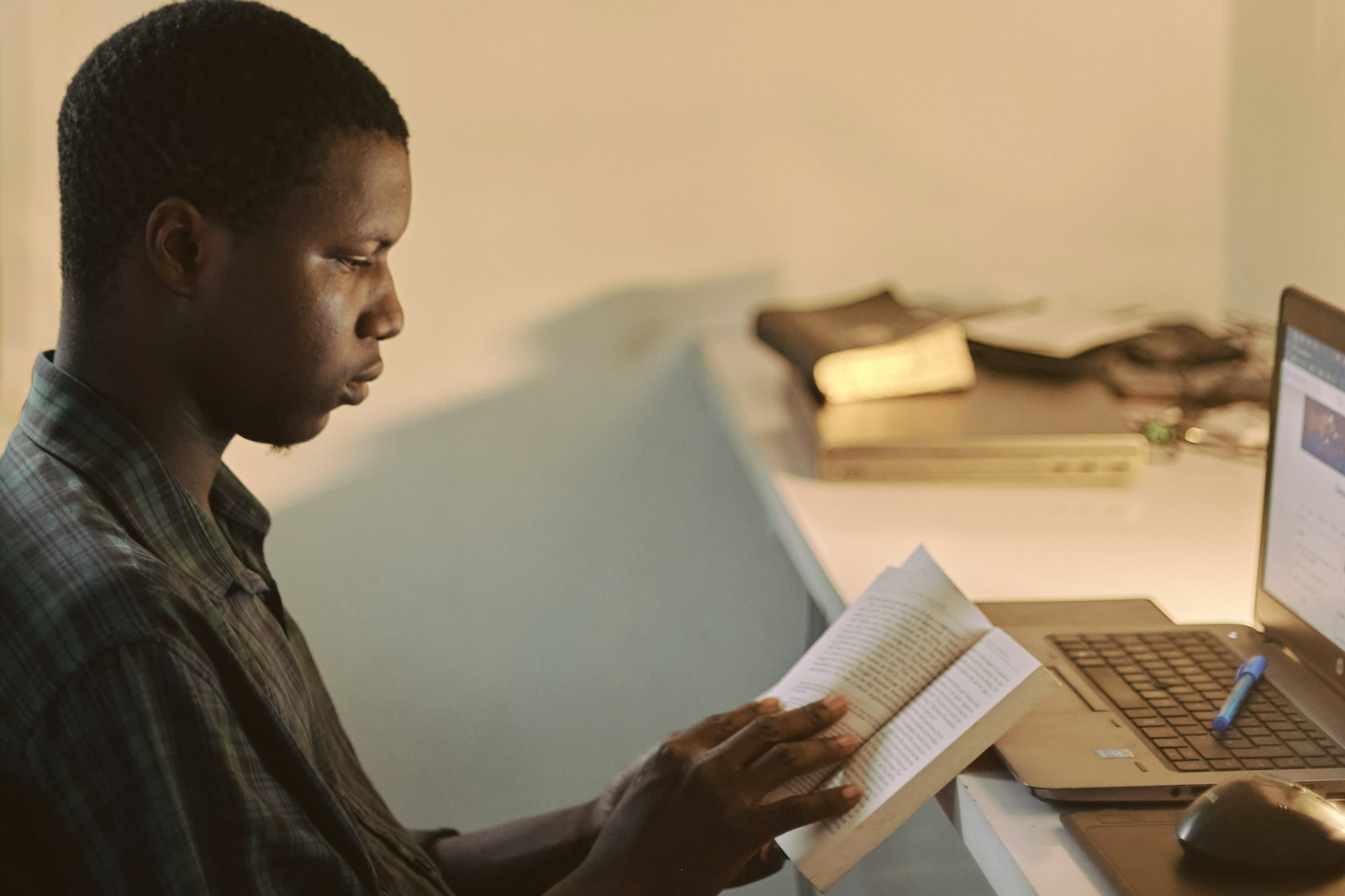
Given that online learning continues to expand and that more and more faculty are engaging with it on a regular basis, it is a good time for instructors to take a moment to pause and reflect on what they have learned from the remote teaching experience and subsequent online teaching experience and consider how they can continue to make instructional improvements going forward.
Reflection on teaching means individual instructors invest effort to think about their experience in order to gain new insights that can enhance their professional practice (Dewey, 1910; Schön,1983; Kolb, 1984). Reflection offers an opportunity for our development as educators that can lead to innovation and better teaching. Reflection can make instructors better at their instructional roles and responsibilities.
Reflection on teaching means individual instructors invest effort to think about their experience in order to gain new insights that can enhance their professional practice.
At the K. Patricia Cross Academy, we encourage you to reflect on your experiences with remote and online teaching with a goal for improving your current teaching practices. When you reflect, we suggest that you think back on prior norms and expectations, evaluate your instructional approaches, and consider how the work you did may have influenced student learning, satisfaction, and engagement. This may provide you with important insights you can apply as you plan for future online teaching.
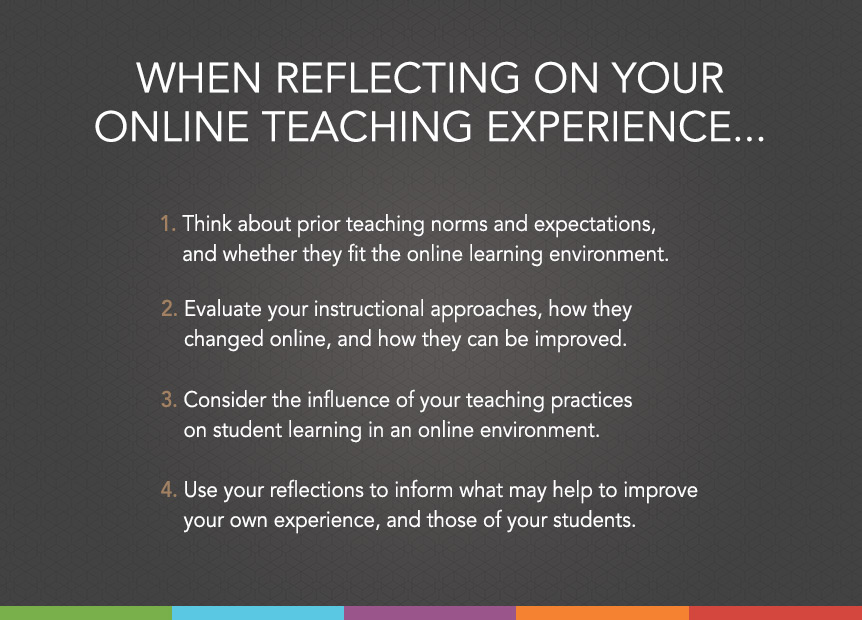
Think about Prior Teaching Norms and Expectations
Remote teaching revealed many implicit teaching norms and expectations. When this exposure occurred, many instructors took the opportunity to rethink their classroom-based policies and procedures. For example, many who had zero tolerance absentee policies took the opportunity to recraft them with more flexibility in the face of COVID-19. Many teachers have retained these adaptations as they have continued to teach online. To further engage in this important reflective work, we suggest considering the following questions when thinking about your remote and online teaching norms:
- What have been the biggest challenges to teaching remotely and online? How have you handled them?
- What have been the biggest benefits to going remote and teaching online? What have you learned?
- What teaching norms have you become aware of that you had not thought about previously? What have you changed?
Evaluate Your Instructional Approaches
With the move to remote and online teaching, many of us necessarily made changes to our teaching approaches. For example, we may have made our expectations more explicit, changed our communication approaches, experimented with new active learning methods, revised existing assignments, organized material differently, and clarified learning outcomes and assessments. As you reflect on your instructional practices, consider the following questions:
- What changes to your instruction did you make when you went remote or began teaching online?
- What worked well?
- What could have been improved?
Consider the Influence of Your Practices on Student Learning
Many educators have questioned the quality of student learning that occurred during remote teaching. Online learning, however, has been shown to be of equal quality to learning in face-to-face courses (Means et al. 2009). That is, learning is not harmed simply because students are studying in an online environment. However, the practices teachers use in an online environment can promote or inhibit learning just as they can in a face-to-face environment. We can learn from reflecting on our experiences by considering instructional practices that have promoted or inhibited student learning in remote teaching as well as in intentionally designed online courses. Consider the following questions:
- To what extent have your teaching practices encouraged or challenged student learning in a remote or online teaching environment?
- Which changed practices have been the most beneficial?
- What data sources have you used to evaluate changes? How valid or trustworthy are these data sources?

Consider the Influence on Student Engagement and Satisfaction
Most instructors have reflected on students’ experience with remote or online learning, at least informally. Giving space to reflect in a more formal way can help you think through student engagement and satisfaction going forward. Consider the following questions:
- What do you think has been the student experience in remote and online courses?
- What aspects of their experiences have they found most satisfying?
- What aspects of their experiences have they found least satisfying?
- How well have they engaged in the online environment? What may have helped or hindered their engagement?
- What else have you learned about students? Their needs? Their experiences?
Using Your Reflections
Looking ahead to the next time you will teach the course or content, think through the lessons you learned from remote and online teaching. Consider the following questions:
- What changes could help to improve your experience?
- What changes could help improve students’ experiences?
- What changes could help maximize student learning?
- What might you carry forward from your remote or online teaching experience into future iterations of the course online or to other modes of course delivery, such as face-to-face or hybrid?
Tips for Continued Reflection Going Forward
Brookfield (2017) suggests the use of four lenses of critical reflection: gathering data from yourself, theories, students, and colleagues. These different lenses can help you see your teaching practices from different perspectives. To make critical reflection an ongoing part of your teaching practice, consider the following suggestions:
- Make time for metacognitive work. Plan time to reflect before, during, and after a course. Document your own experiences. Maintain a record of practices you want to keep or change for the future. For instance, briefly write down your reflections after each synchronous class session or annotate your asynchronous course preparation in a journal or digital space.
- Search out sources that offer theoretical frameworks for thinking about teaching and learning in online contexts. How do these theories compare with your personal experience?
- Check in with students at different times during the term to ask them how they are experiencing the course. Gather student opinions through a poll or other format. Review their responses and then inform students of the adjustments based on their suggestions you plan to make.
- Discuss online teaching with colleagues. This approach can help put online instruction into perspective. Share challenges and then brainstorm solutions. Invite colleagues to conduct a peer review. Discuss the objectives and the desired input with them and then ask them to visit a synchronous session, watch a recording of your class, or go over the course materials (e.g., syllabi, assignments, activities).
Conclusion
Reflection is an important element of professional development and instructional improvement. Making time for meaningful reflection, however, can be challenging, particularly with all of the other roles and responsibilities we have. We suggest, however, that such reflection is time well spent and is worth the effort as you move forward with teaching online.
Enter your email below to receive information about new blog posts.
References
Brookfield, S. (2017). Becoming a critically reflective teacher. Wiley.
Dewey, J. (1910). (1991 edition). How we think. Prometheus.
Kolb, D. (1984). Experiential learning, Experience as the source of learning and development. Prentice Hall.
Means, B., Toyama, Y., Murphy, R., Bakia, M., Jones, K. (2009). Evaluation of evidence-based practices in online learning: A meta-analysis and review of online learning studies. US Department of Education.
Schön, D. A. (1983). The reflective practitioner: How professionals think in action. Basic Books.
Suggested Citation
Barkley, E. F., & Major, C. H. (n.d.). Reflecting on remote and online teaching: Making meaning and moving forward. CrossCurrents. https://kpcrossacademy.org/reflecting-on-remote-and-online-teaching-making-meaning-and-moving-forward/

Engaged Teaching
A Handbook for College Faculty
Available now, Engaged Teaching: A Handbook for College Faculty provides college faculty with a dynamic model of what it means to be an engaged teacher and offers practical strategies and techniques for putting the model into practice.
